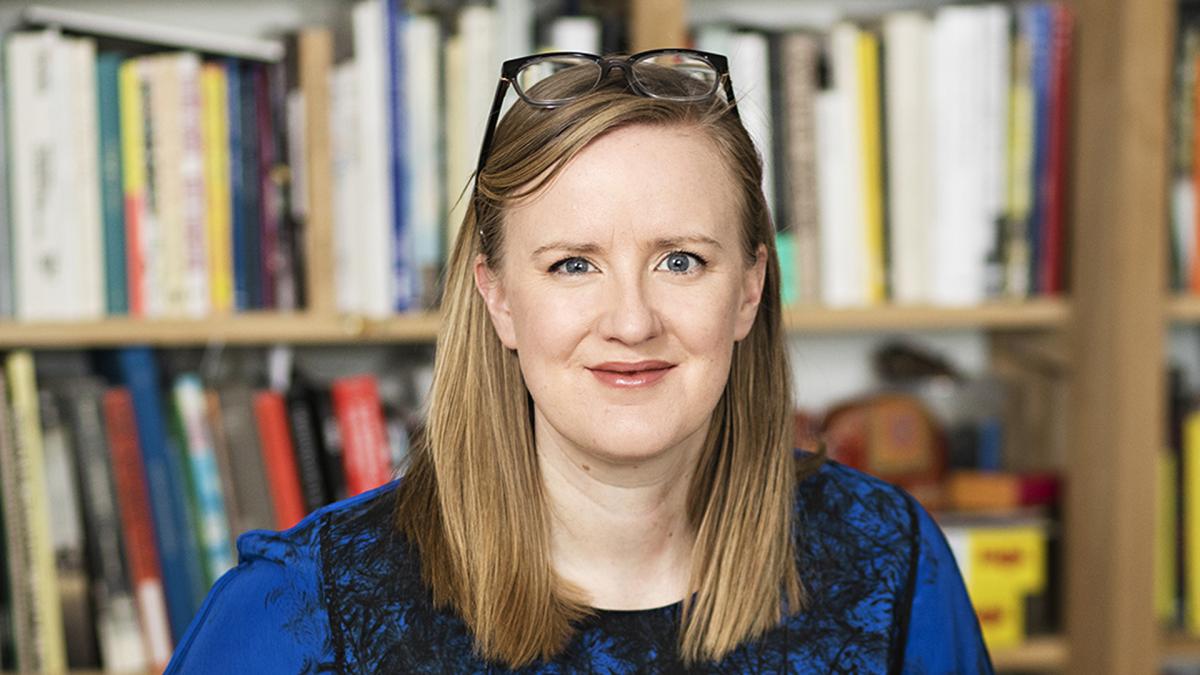Column by Suzanne Mooney: Artists have the power of representation
“Artists don’t sit outside of their social context – but they do have the opportunity to comment, evaluate, question and be heard”, says lecturer in contemporary art in society, Suzanne Mooney.

In the video, a young woman walks next to a high fence painted in black and simultaneously draws a long, wavy line on the fence with a piece of yellow chalk, one line after another. The work is titled “Follow me”, and the artist is a Portuguese doctoral student Flávia Costa who completed an exchange period at the Academy of Fine Arts. She was interested in the idea of drawing as an act of knowledge, in mapping and getting to know the city. The end result was a subtle performative drawing.
The fence that Costa drew her route on was the construction site fence surrounding the lot where Uniarts Helsinki’s new building is being built in 2021. It is one of the many places that have incorporated public art created by fine arts students over the last couple of years.
Public art projects are important, because they are an opportunity to bring art to a wider audience. It’s a chance for the student to understand that when you are producing art in the public sphere, there are always multiple people involved. The work is not produced alone and autonomously in a studio, and it’s not just the interest of the artist that needs to be considered.
I began in my post of lecturer in contemporary art in society last August. My role as a teacher is twofold: on the other hand, I teach practical career skills, such as presentation skills, how to write grant applications and how to network and build international connections. The other half is connected to the artist’s role in society: how can an artist be socially, politically and ethically engaged in a public context?
An artist doesn’t sit outside of a social context; an artist is just as embedded in it as any other individual. But artists also have the opportunity to comment, evaluate, question – and be heard. It’s a privileged position to be in.
I don’t think that all visual artists have issues of publicness, accessibility or audience at the forefront of their minds, but all artists should reflect on art as a form of communication and commentary and the power and agency that it brings.
Artists may not have power the same way that authorities or governments do, but there is power in representation. Artists have to be aware of their moral and ethical responsibility.
Suzanne Mooney
Lecturer in contemporary art in society at the Academy of Fine Arts of Uniarts Helsinki.
The text has originally been published as part of Uniarts Helsinki’s annual report.